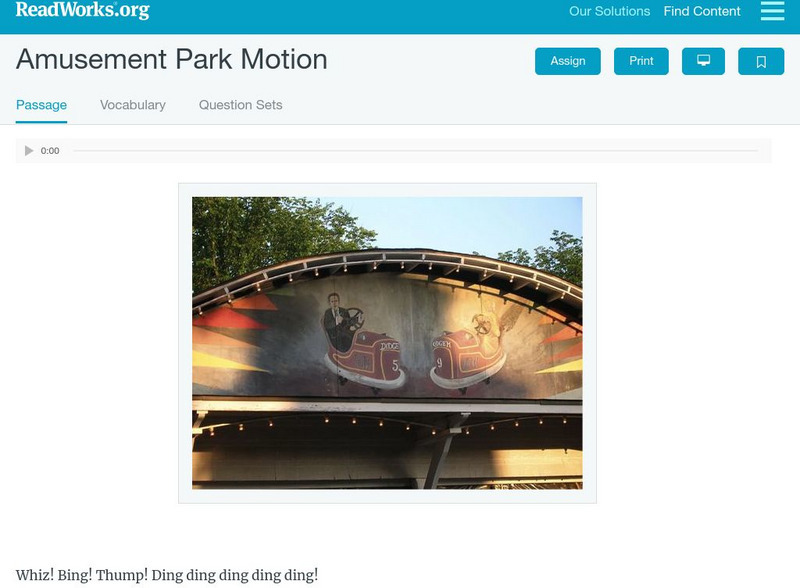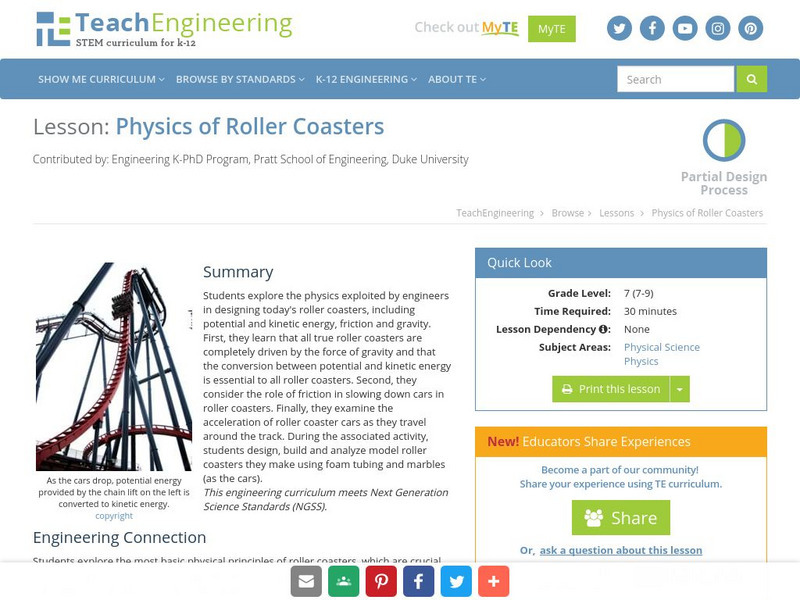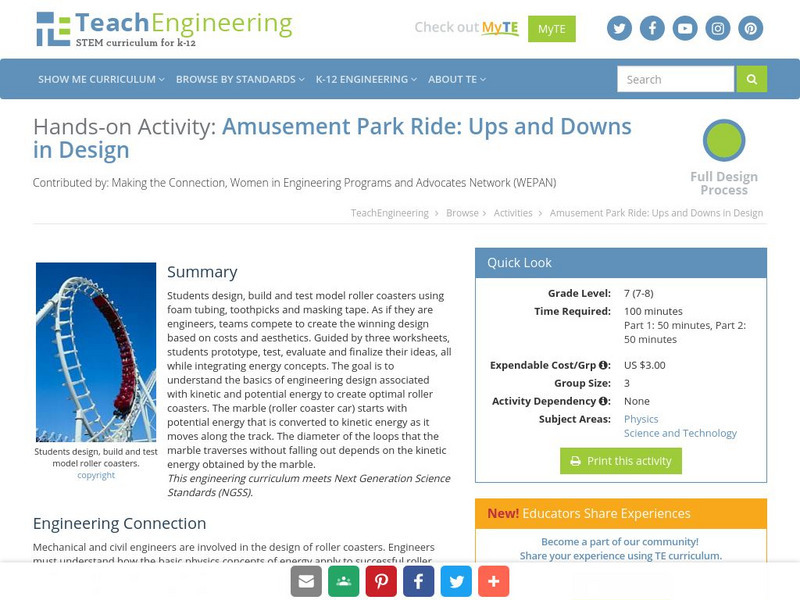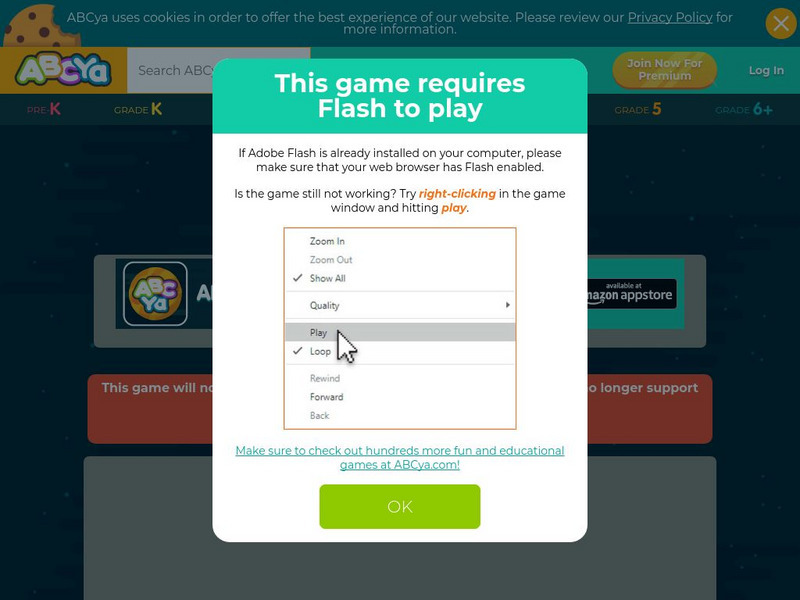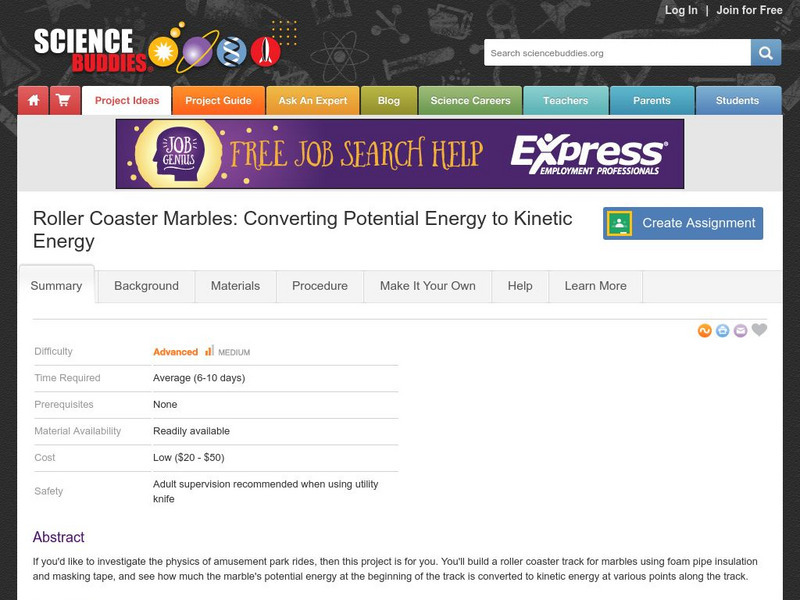Hi, what do you want to do?
Annenberg Foundation
Geometry 3D Shapes: Surface Area and Volume
Whether you wrap it or fill it, you're using geometric concepts. Classmates use an interactive approach to learn how to find volume and surface area of cylinders and prisms in the second lesson in a five-part series. The online lesson...
Annenberg Foundation
Geometry 3D Shapes: 3D Shapes
Explore vocabulary related to three-dimensional shapes. An instructional website describes the characteristics of different geometric solids. Learners can use an interactive component to view nets, faces, vertices, and edges of common...
Annenberg Foundation
Geometry 3D Shapes: Test Your Skills
Time to find out what they've learned! The final lesson of a five-part series has learners complete a 39-question multiple choice review. They use what they've learned in the previous lessons to complete questions that include concepts...
Teach Engineering
A Shot Under Pressure
You've got to pump it up! Using the equations for projectile motion and Bernoulli's Principle, class members calculate the water pressure in a water gun. The pupils collect data on the number of pumps and distance traveled in order...
Curated OER
May The Force Be With You
Eighth graders investigate Newton's Laws of Motion. They use the example of a roller coaster for illustration purposes. A force associated with a roller coaster is tested, data graphed, and a conclusion is drawn. They use excel in order...
Curated OER
Observing Motion
First graders explore movement and motion. For this motion lesson, 1st graders how objects can move as well as how the Earth is in constant motion and the force of gravity. Students complete a coloring sheet.
Curated OER
May the Force Be With You
Students read an article, brainstorm ideas and prepare journals investigating why people enjoy 'thrill' rides, what forces affect the body on these rides and how they can become dangerous.
Curated OER
Let's Outrage the Bull
Students study kinetic and potential energy. In this energy lesson, students in grades K-2 understand the differences between kinetic and potential energy. Students in grades 3-5 demonstrate that kinetic and potential energy. Students in...
Curated OER
Catapults!
Young scholars work together to discover the relationship between the angle of catapults and the flight of different objects. They discover the heavier the object the more force is needed. They examine how engineers use this...
Curated OER
Web Design
Middle schoolers are introduced to the seven web design elements. Using examples, they identify the use of good and bad elements. They work with a computer program to help them design their own website and share them with the class.
Curated OER
Algebra-Based Linear Motion Problems
In this motion activity, students determine the distance traveled, the acceleration, and velocity of different objects. This activity has 11 problems to solve.
Annenberg Foundation
Annenberg Learner: Amusement Park Physics: Roller Coaster
Learn about Newton's Laws of Physics, g-force, the causes of motion sickness, and more by reading about different rides at an amusement park.
Read Works
Read Works: Amusement Park Motion
[Free Registration/Login Required] This informational text is an article about the physics topic of "momentum" that occurs at amusement parks. This passage is a stand-alone curricular piece that reinforces essential reading skills and...
Physics Classroom
The Physics Classroom: Circular and Satellite Motion: Amusement Park Physics
In this interactive module, students explore the centripetal acceleration experienced by riders within the circular-shaped sections of a roller coaster track.
Annenberg Foundation
Annenberg Learner: Amusement Park Physics: Roller Coaster
This interesting and interactive exhibit demonstrates how Newton's Laws of Motion impact the design and safety of roller coasters.
Annenberg Foundation
Annenberg Learner: Amusement Park Physics: The Principles of Free Fall
An article describing free fall principles in roller coaster rides. In addition to the explanation of free fall, an experiment is described that allows you to test free fall with a cup of water. Part of a larger presentation on roller...
TeachEngineering
Teach Engineering: Physics of Roller Coasters
Learners explore the physics utilized by engineers in designing today's roller coasters, including potential and kinetic energy, friction, and gravity. First, students learn that all true roller coasters are completely driven by the...
TeachEngineering
Teach Engineering: The Science of Swinging
Students learn what a pendulum is and how it works in the context of amusement park rides. While exploring the physics of pendulums, they are also introduced to Newton's first law of motion - about continuous motion and inertia.
TeachEngineering
Teach Engineering: Amusement Park Ride: Ups and Downs in Design
This unit has students design and build foam tubing roller coasters. The design process integrates energy concepts as they test and evaluate their designs that address the task as an engineer would. The goal is for students to understand...
ABCya
Ab Cya: Magic Pen: A Physics Based Game
A challenging game of physics for students to enjoy. Test gravity and patience by adding parts to the illustration to move a ball along to the flag.
Physics World
Physics World: Contextual Physics in Ocean Park
After downloading the "Motion Video Analysis" software, users can collect data about moving object's position from digital movie clips. This collection of data will allow them to plot motion graphs and draw conclusions about physics in...
Science Buddies
Science Buddies: Converting Potential Energy to Kinetic Energy
If you'd like to investigate the physics of amusement park rides, then this project is for you. You'll build a roller coaster track for marbles using foam pipe insulation and masking tape, and see how much the marble's potential energy...
TeachEngineering
Teach Engineering: Swinging With Style
Students experientially learn about the characteristics of a simple physics phenomenon - the pendulum - by riding on playground swings. They use pendulum terms and a timer to experiment with swing variables. They extend their knowledge...
NC State University
The Engineering Place: Roller Coasters [Pdf]
A instructional activity where students construct a roller coaster and test it under different conditions to learn about force and motion.

















